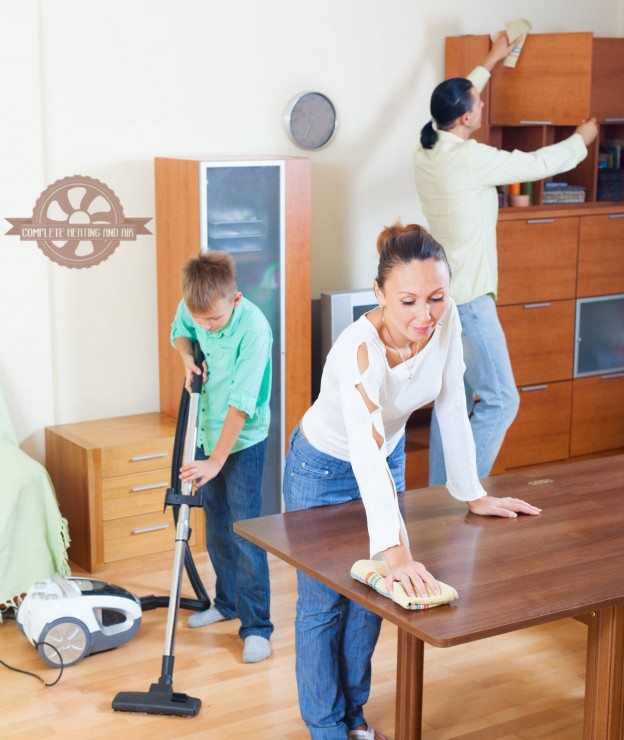Breathe easier this winter with Clean Home Air!
During the winter months when you and your family are cooped up inside, it’s important to make sure the quality of the air in your home is top notch. And when the inevitable winter inversion hits Utah, Clean Home Air is even more important. The air in our homes can carry more toxins and chemicals than the air outside. While some gasses can be deadly, it is more likely certain elements in your air could aggravate asthma or allergies. Poor air quality is also connected to headaches, more frequent colds, sore throats, skin rashes and eye irritation. To make sure your family is breathing safe while awaiting spring, we’ve compiled a list of tips below.
Step 1: Check your air filter
The air filter in your heating and cooling system will capture allergens in the air like pollen, mold spores, dust mite debris, smoke, pet dander and smog. Choose a high quality filter like a HEPA, or high-efficiency particulate air filter, for your heating and cooling units. Read the directions on your filter, but generally it should be changed a few times a year. But during the long winter months if you or your family have allergies consider changing it sooner or more often.
Changing the air filter is an easy and safe task for homeowners. But if you find you are having trouble with yours or notice a problem with your furnace, Sandy Heating & Air Conditioning can help. Whether it is a thermostat, ignition or airflow issue, Complete Comfort will be there to keep your home warm.
There are other filters in your home that also require attention if you want to achieve clean home air. Change the filter on your vacuum so that the particles you clean up don’t get blown right back out into the air. Check other filters like the dryer lint screens, air purifiers, range hood screens, and bathroom exhaust fan grilles. Clean or replace them as needed.
Step 2: Vacuum and Dust
Vacuum your home often. All of the dust, dander, pollen and other particles you don’t want to have in the air settle onto the floors. Vacuuming often, even if your floors look clean, will help keep the air cleaner. You should also vacuum after you dust. Dusting with a wet rag will also help to collect particles rather than sending them airborne with dry dusting. It’s also a great practice to vacuum your air vents.
Step 3: Minimize hazardous fumes
Minimize carbon monoxide gas by properly maintaining and venting heating equipment, wood stoves, fireplaces, chimney and vents. You should always have a working carbon monoxide detector on each floor of your home. Get a radon testing kit to avoid one of the leading causes of lung cancer. If you smoke, do so outside. And don’t store chemicals, solvents, glues or pesticides in your home.
Step 4: Natural Air Filters
Not only do they look great, but plants will naturally clean the air around them. Aloe Vera plants, palms, and orchids are just a few examples of the many plants that are great options to have in the home. This shouldn’t be the only method of filtration if you want to maximize your clean home air.
Dry winter air will also dry out the mucus membrane, making you more susceptible to germs. If you’re feeling extra dry, plug in a humidifier while you sleep. You may also want to consider an air purifier to help filter out dust, tobacco smoke and pollen.

